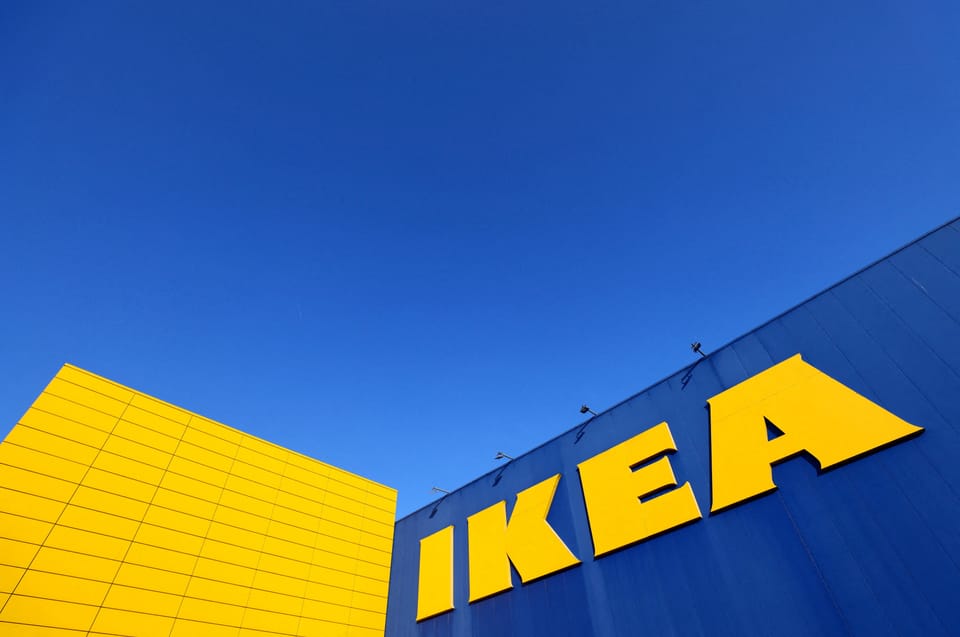IKEA’s Logistics: Redefining Global Supply Chain Efficiency for the Import-Export World

When we talk about the global supply chain titans, IKEA’s name pops up like a beacon in the import-export universe. Moving flat-pack furniture to 460+ stores across 60 countries isn’t just logistics—it’s an operational masterpiece. Behind the sleek minimalist furniture is a supply chain that’s as innovative as it is efficient.
For those of us in the import-export industry, IKEA’s approach isn’t just impressive—it’s downright inspirational. Let’s break down how IKEA dominates the market and what we can learn from its logistics strategy.
1. Flat-Pack Furniture: The King of Container Optimization
Every importer/exporter knows that container space is gold. IKEA’s flat-pack design is a game-changer in optimizing freight. By disassembling furniture and packaging it flat, IKEA maximizes container capacity, reducing shipping costs and environmental impact.
Import-Export Translation:
Flat-packing lets IKEA cram up to 15% more units per container compared to competitors shipping pre-assembled furniture. That’s fewer containers, lower costs, and higher margins—every importer’s dream.
Example: A standard 40-foot container can hold up to 2,200 BILLY bookcases thanks to flat-packing. Compare that to bulky furniture, and the math speaks for itself.
2. Regional Sourcing and Manufacturing: Cutting Lead Times
IKEA’s logistics map is a masterclass in nearshoring and strategic supplier relationships. While IKEA sources raw materials globally, production is often local to regional markets, reducing lead times and shipping costs.
Import-Export Translation:
- Reduced Transit Times: Producing close to demand zones minimizes shipping delays and reduces inventory holding costs.
- Mitigated Tariffs and Duties: By setting up regional manufacturing hubs, IKEA avoids costly import tariffs on finished goods.
Hot Fact: IKEA has over 1,800 suppliers across 50 countries, with many factories located within proximity to major consumer markets.
3. Distribution Hubs: The Power of Consolidation
IKEA operates massive distribution centers (DCs) that serve as central consolidation hubs. Products from multiple suppliers are collected, sorted, and shipped to stores or smaller local warehouses.
Import-Export Translation:
This is consolidation at scale! By pooling shipments into full-container loads (FCLs) at DCs, IKEA drastically reduces less-than-container load (LCL) inefficiencies. For importers/exporters, this model screams “cost efficiency.”
Example: IKEA’s Dortmund distribution center (the largest in Europe) handles over 1 million pallets annually, ensuring fast replenishment across European markets.
4. Mastering Multimodal Transport
IKEA’s logistics isn’t just about the sea lanes; it’s a multimodal powerhouse that seamlessly integrates shipping, rail, road, and last-mile delivery.
Import-Export Translation:
- Ocean Freight: IKEA books massive volumes with carriers, negotiating better rates and priority treatment.
- Rail Solutions: For inland markets, rail freight is faster and greener than trucking alone.
- Last-Mile Optimization: In urban centers, IKEA uses smaller trucks and even electric vehicles to meet delivery demands.
Case Study: IKEA is a heavy user of China-Europe rail routes for faster delivery of goods to European markets. This cuts transit times by 50% compared to sea freight.
5. Sustainability at Scale: From Eco-Packaging to Green Transport
For the import-export community, sustainability is no longer optional—it’s a competitive advantage. IKEA leads the way with initiatives that blend environmental goals with cost efficiencies.
IKEA’s Sustainable Edge:
- Eco-Friendly Packaging: Flat-packing doesn’t just save space—it reduces waste and emissions.
- Green Transport Fleet: IKEA aims for zero-emission deliveries in major cities by 2025, with electric trucks and renewable fuels leading the charge.
- Renewable Energy: IKEA is investing in solar and wind energy to power its operations, reducing carbon footprints across the supply chain.
Fun Fact: IKEA’s green initiatives have already slashed CO₂ emissions by over 50,000 tons annually, equivalent to removing 10,000 trucks from the roads.
6. E-Commerce Logistics: Cracking the Last-Mile Code
E-commerce brings a whole new layer of complexity to logistics, especially for bulky items like furniture. IKEA’s response? Innovation, partnerships, and scalability.
Import-Export Translation:
- Urban Fulfillment Centers: IKEA is building smaller, city-based warehouses to speed up deliveries in dense markets.
- Third-Party Partnerships: Collaborations with last-mile experts like TaskRabbit ensure seamless delivery and assembly.
- Automation: Robotic systems in warehouses pick and pack online orders faster, reducing operational costs.
Pro Insight: IKEA’s focus on urban fulfillment reduces delivery zones, cutting lead times for customers and costs for the company.
7. Lessons from IKEA for Import-Export Professionals
IKEA’s logistics playbook offers some serious lessons for import-export businesses:
- Optimize Freight: Space is money. Invest in smarter packaging or consider consolidation strategies.
- Regionalize When Possible: Nearshoring reduces transit times, tariffs, and risks.
- Think Green: Sustainability can improve your bottom line and appeal to eco-conscious customers.
- Embrace Multimodal Solutions: Don’t put all your eggs in one mode of transport—integrate for speed and savings.
Conclusion: IKEA’s Logistics Mastery in Action
For import-export pros, IKEA is a shining example of how to blend efficiency, innovation, and sustainability at scale. From container optimization to regional production and last-mile mastery, IKEA’s logistics is a blueprint for global success.
Next time you assemble an IKEA piece, take a moment to appreciate the brilliance behind getting that flat-pack box from the factory floor to your doorstep. It’s not just furniture—it’s logistics at its finest.
What’s your biggest takeaway from IKEA’s logistics strategy? Let’s discuss!
